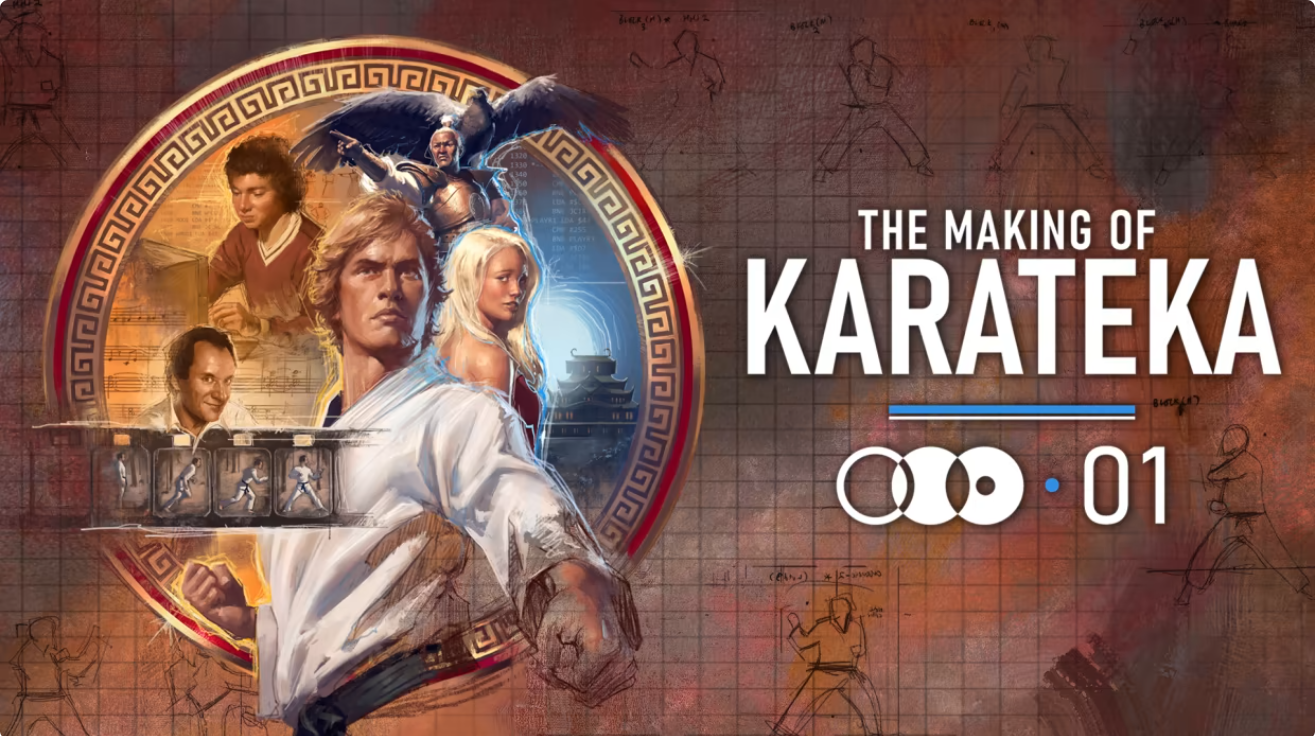Story:
You won’t find a big bad guy trying to take over the world in this game’s story. Instead what you get is the story of how Jordan Mechner flipped the video game industry on its head and created one of the most groundbreaking video games to ever hit store shelves.

Gameplay:
Because this is an interactive history, there aren’t a lot of mechanics. You have a timeline that you navigate that tells the story through images and some videos of both the creator of Karateka Jordan Mechner’s life story, and the making of Karateka. Along with these videos and images, you have playable prototypes for games that were never released, prototypes and retail releases of Karateka, as well as one re-imagined title.
The prototypes offered in this collection are Asteroid Blaster, Star Blaster, and Death Bounce. Asteroid Blaster was a tribute game of Asteroids that was being developed for the Apple II computer and plays as you would expect with the ship having to destroy asteroids to obtain a high score. Once the game was submitted to the publisher Hayden Software, they made several suggestions that would become Star Blaster which implemented changes that the publisher suggested to have it become its own game and be less of a tribute game with some gameplay changes and changes to the title screen. Neither game was ever finished and released due to disagreements between Mechner and the would-be publisher Hayden Software.
Death Bounce was the result of what Mechner learned through the development process of his previous titles. It would be a title that was inspired by his previous games as well as Asteroids but instead of asteroids to destroy, it was eggs, and even had an intro sequence at the start of the game. This new game was pitched to Broderbund in 1983, but as with previous titles, this too would see rejection. The reasons for this rejection would be because Mechner had requested to be paid in advance, and because Mechner could not agree with the changes they were asking to be made to the game. It is important to note that prior to this rejection, Death Bounce saw four different revisions, put in front of a focus group, and there was a year of back and forth between Mechner and the publisher, which was the furthest one of Mechner’s games came to being published.
A year of development later, Karateka would come on the scene and change the landscape of gaming. Karateka is Mechner’s original concept that combined his passion for Karate, filmmaking, and video games. It tells the story of a man who is put to the test by taking on opponents one by one as he traverses through a mountainous fortress on a quest to save a princess. You can move the main character back and forth to avoid your enemy and formulate a strategy to take them down, and have both a punch and a kick with each of you having a life bar at the bottom of the screen.

Graphics and Performance:
All of the games listed above are pretty basic by today’s video game standards, but were rather impressive at the time graphics-wise. They would have played on the Apple II and played like traditional arcade games of their time.
Karateka is the first game to incorporate cinematic movement in its cutscenes and player/enemy movement and plays more like an interactive film than a game, which was groundbreaking for its time. Karateka remastered takes what makes the game great and makes it current as best as it can, with animation that is smoother and the FPS is much faster, making the game much more playable than its original release.

Sound:
While other games at the time had little to no background music and primitive sound effects, Karateka had sound and music that told a story. The music found in this game was composed by Jordan Mechner’s father, composer and musician; Francis Mechner. Every aspect of the game has music to help set the tone and tell the events of what’s happening on screen. Music during the intro, before a fight, and during a fight all dynamically change and are completely different from one another.
Accompanying the music are sound effects of the punches and kicks that really give you a sense of landing that hard-hitting blow to your opponent. Your character and enemy will even cry out as they are fighting and when defeated. This helps to give both a sense of depth and realism to the game.

Conclusion:
This interactive history of Karateka is the first game in the Gold Masters Series from Digital Eclipse. It’s a documentary, a playable game collection, and a unique take on video game preservation. I can’t wait to see what future games come to the Gold Masters series of games from Digital Eclipse.
If you’re a fan of video games, video game history, or just history in general, this game is definitely worth picking up on your platform of choice.
Disclaimer: A review key was provided
In addition to writing articles, Ryan Byers also creates content for his YouTube channel called "Obscure Games and Consoles", collects video games, and dabbles in video game development.



[…] Eclipse recently released The Making Of Karateka, an interactive documentary about the game along with a collection of games to play, the first in […]